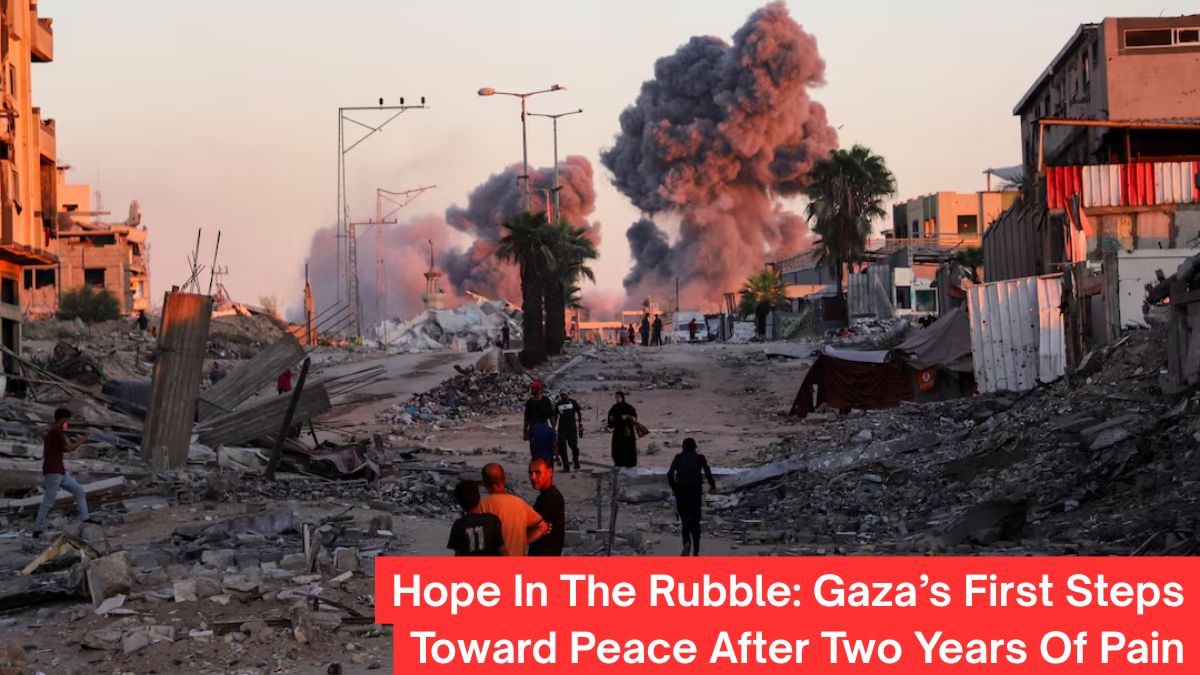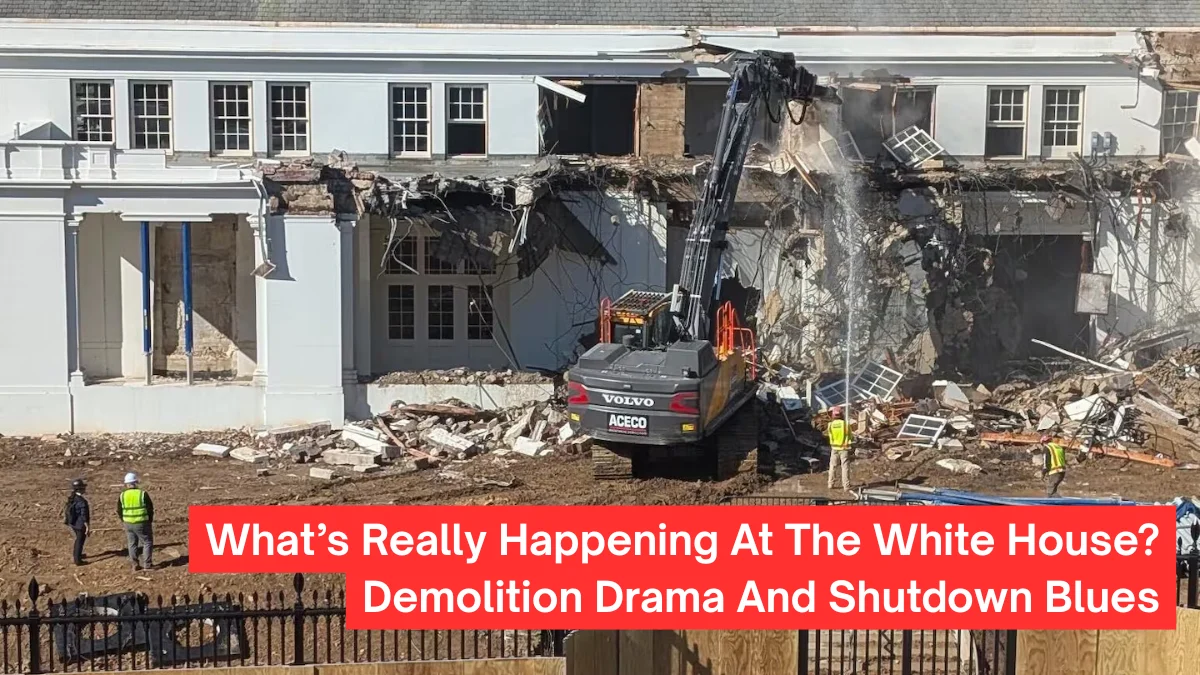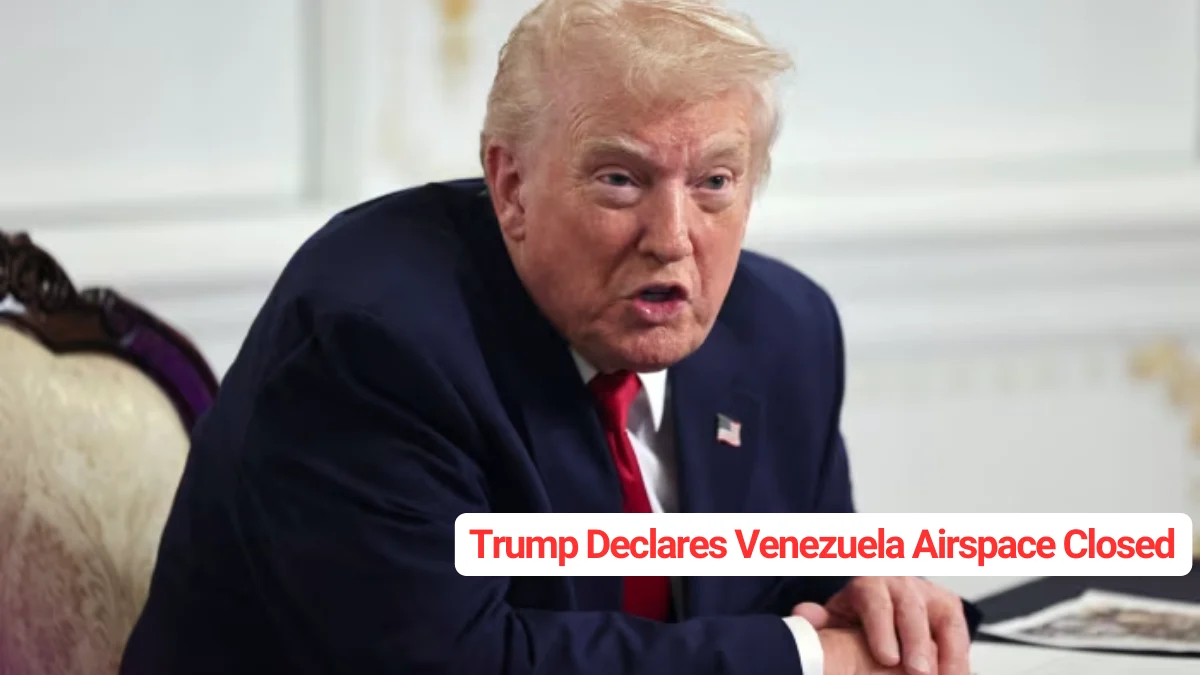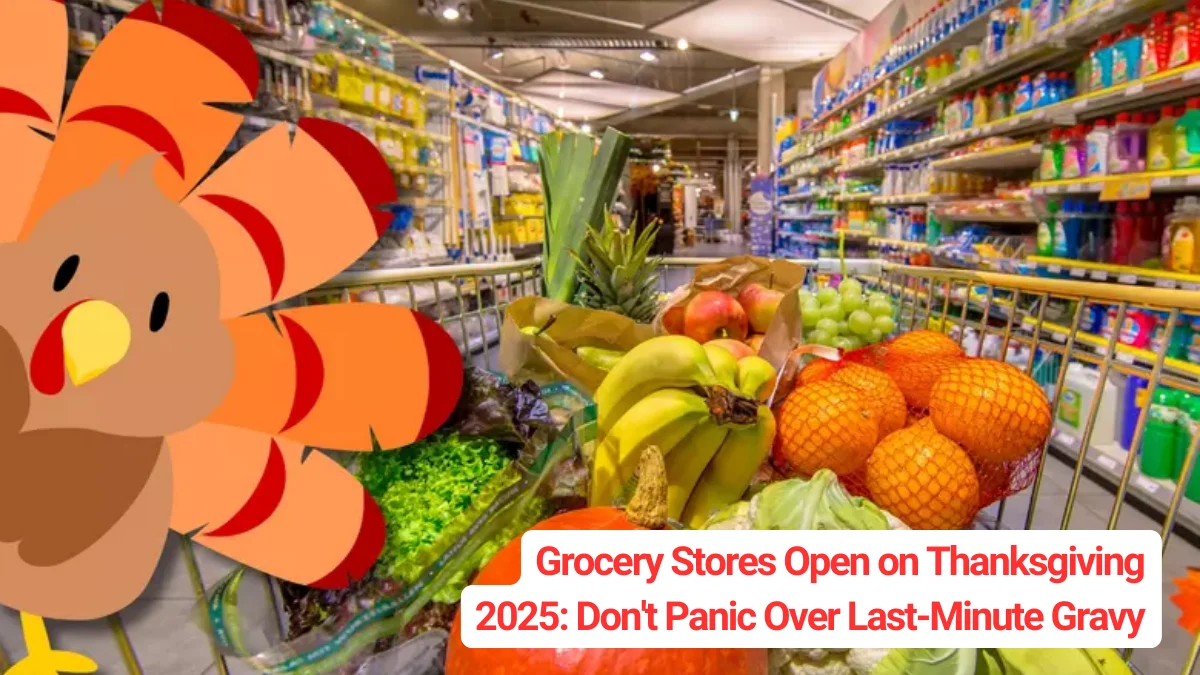Gaza is having a rare moment of peace after two years of constant fighting. On October 8, 2025, Donald Trump, the President of the United States, said that Israel and Hamas had agreed to the first step of a new peace plan.
Families who have been living in fear and under constant bombing are relieved by the ceasefire. Soon, hostages may be able to go home, and humanitarian aid is expected to start coming in. The deal is an important first step toward stability, even though the road ahead is still unclear.
Key Takeaways
- Ceasefire signed between Israel and Hamas under U.S. mediation.
- 20 Israeli hostages to be released in exchange for 2,000 Palestinian prisoners.
- Immediate halt to fighting and partial Israeli troop withdrawal from Gaza.
- Humanitarian aid to begin within 24 hours of signing.
- Phase one forms part of a 20-point plan aiming for a long-term peace framework.
The Deal Explained: Key Points
After a lot of talking between Qatar, Egypt, and Turkey, negotiations ended in Sharm el-Sheikh, Egypt. Here are the things that the first part of Trump’s 20-point plan says:
Hamas will free 20 living Israeli hostages and give back the bodies of the dead in exchange for prisoners. In return, Israel will let go of about 2,000 Palestinian prisoners, including 250 who are serving life sentences and 1,700 who have been in jail since October 7, 2023. Releases should start within 72 hours of signing, and Egypt is where they are expected to start.
Ceasefire Implementation: The fighting will stop right away. Within 24 hours, Israeli troops will leave about 70% of Gaza. Today, the Israeli government is supposed to vote on the deal.
Aid and Governance: After the ceasefire, humanitarian supplies like food, medicine, and fuel will go into Gaza. A temporary committee will run things on a day-to-day basis, and Hamas will step back from direct control but stay involved. There will probably be talks about a technocratic government next.
The larger plan’s goal is to make peace last, rebuild Gaza, and maybe even get countries in the region to work together more through the Abraham Accords. Trump said it was a step toward “everlasting peace.” Antonio Guterres, the Secretary-General of the UN, called it a “seizable opportunity” to move closer to a two-state solution.
Timeline Of Key Events
| Date | Key Moment | What Happened Next |
|---|---|---|
| Oct 6–7 | Indirect talks begin in Egypt | Hamas signals readiness for limited withdrawal; Israel agrees to initial line. |
| Oct 8 | Trump announces the phase one deal | Qatar confirms all terms; celebrations reported across Gaza. |
| Oct 9 | Signing in Egypt | UN calls for full humanitarian access; global markets react positively. |
Responses from Around the Region
The announcement got a lot of people talking online. Hashtag #GazaCeasefire was popular all over the world, and pictures showed people celebrating in hospitals and on the streets. Families of Israeli hostages also held vigils and called the deal a time of “hope.”
But there is still doubt. A lot of people wondered if both sides would keep their promises. Some people said that political divisions in Israel or pressure from within Hamas could slow down the process. Analysts noted that 40% of public discussion showed doubt, while 60% showed cautious hope.
The move was welcomed by leaders around the world. The UN told everyone to make sure civilians were safe, and the markets reacted positively: oil prices fell 0.8% and stocks rose as tensions in the region eased.
Why This Time Is Different
The attacks on October 7, 2023, killed 1,200 Israelis. After that, Israel launched a long campaign that killed more than 67,000 Palestinians and destroyed much of Gaza. Previous ceasefires fell apart quickly, but experts think this one has more support. Arab countries are working together more, Hamas is weaker after losing its leaders, and the U.S. has put more pressure on them to work together.
Experts still say that keeping peace requires ongoing international oversight. Any new strikes or delays in disarmament could start up fighting again. Guterres said, “The stakes have never been higher.”
A Weak Beginning on the Road to Peace
The current agreement is only the first of twenty, but it opens a door that has long seemed impossible to open. For families in Gaza, it means a short return to normal life: kids can play without fear, homes can be rebuilt, and help can get to those who need it. The commitment of everyone involved will determine whether this fragile progress lasts.








